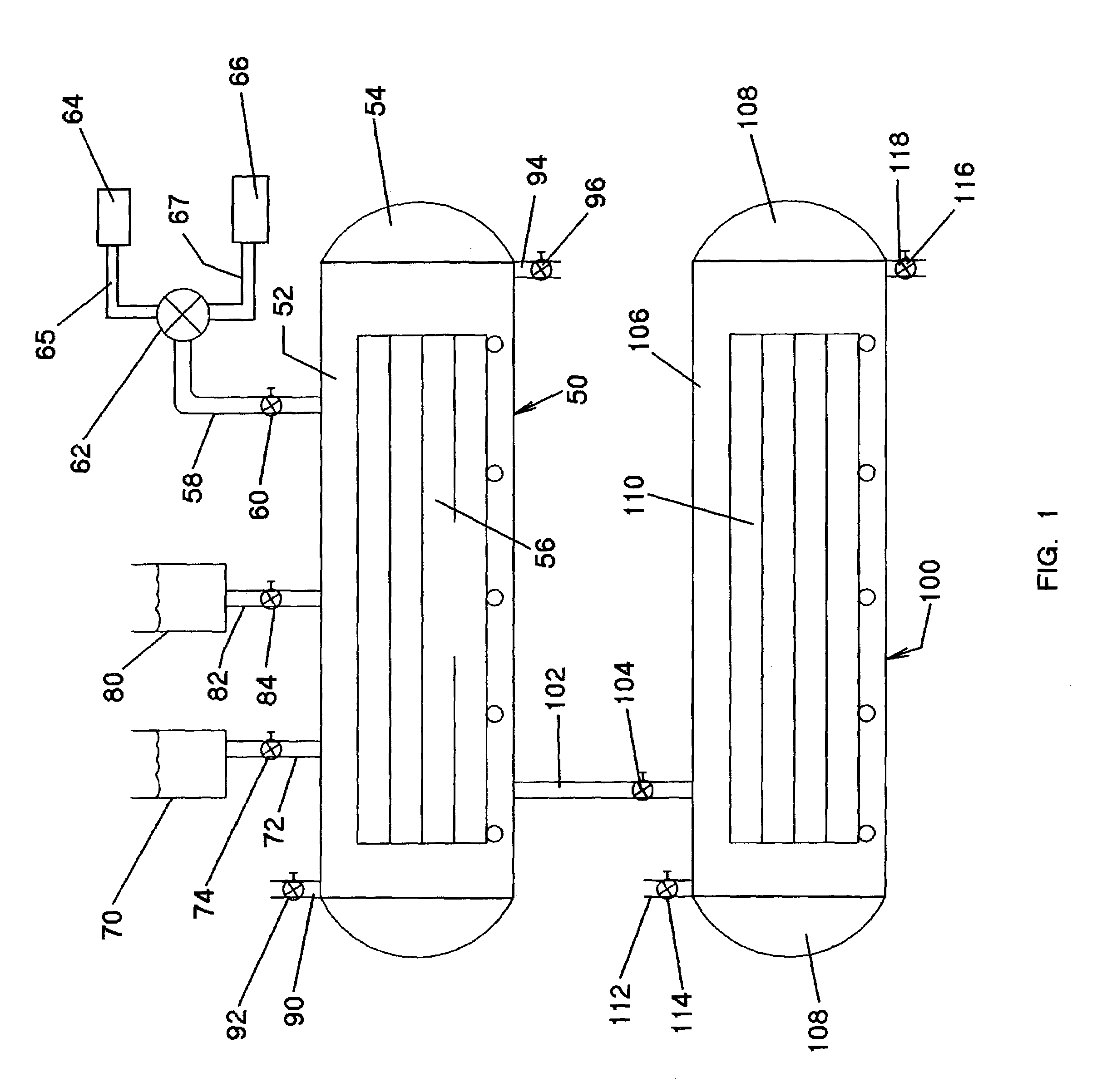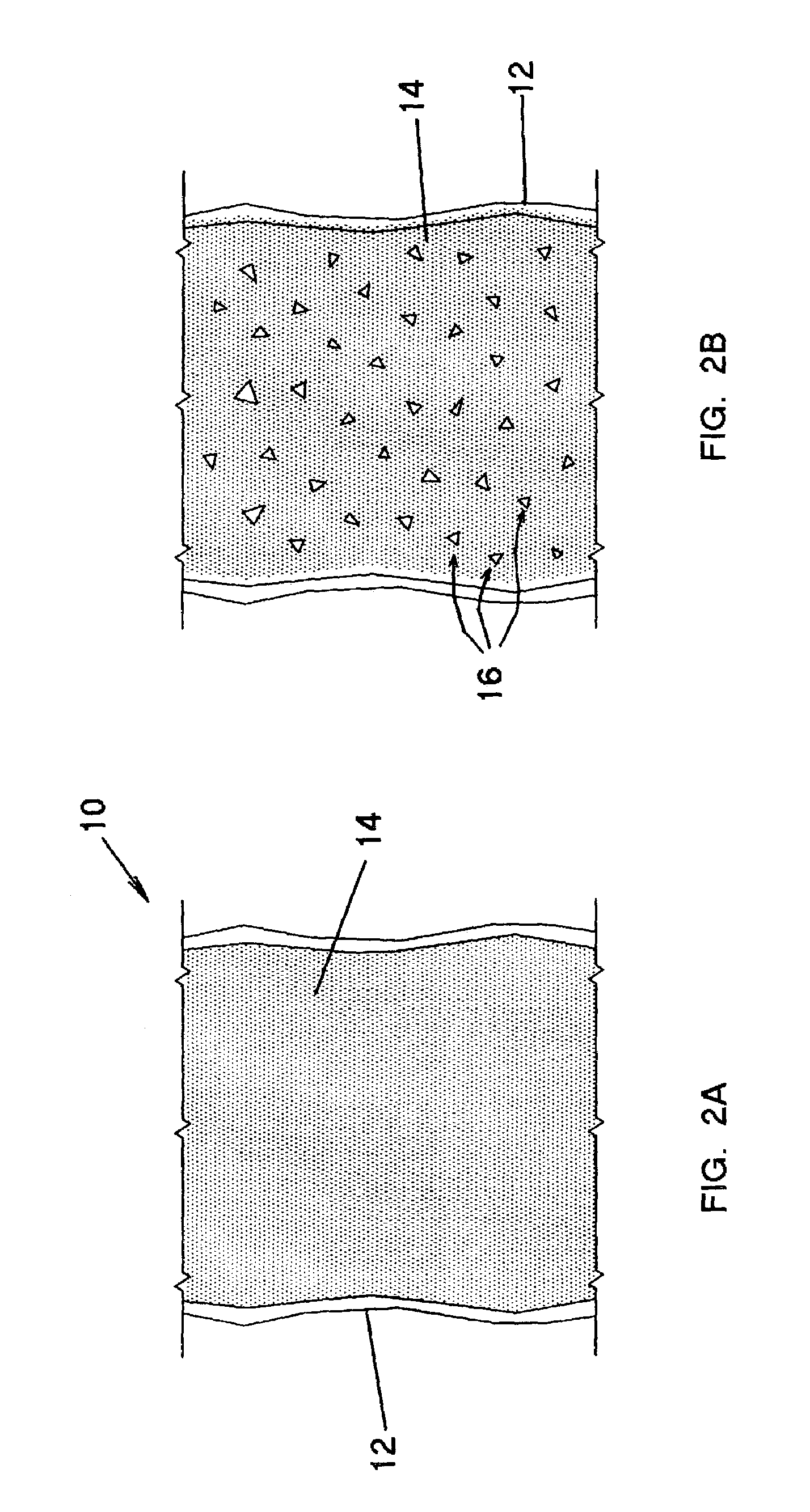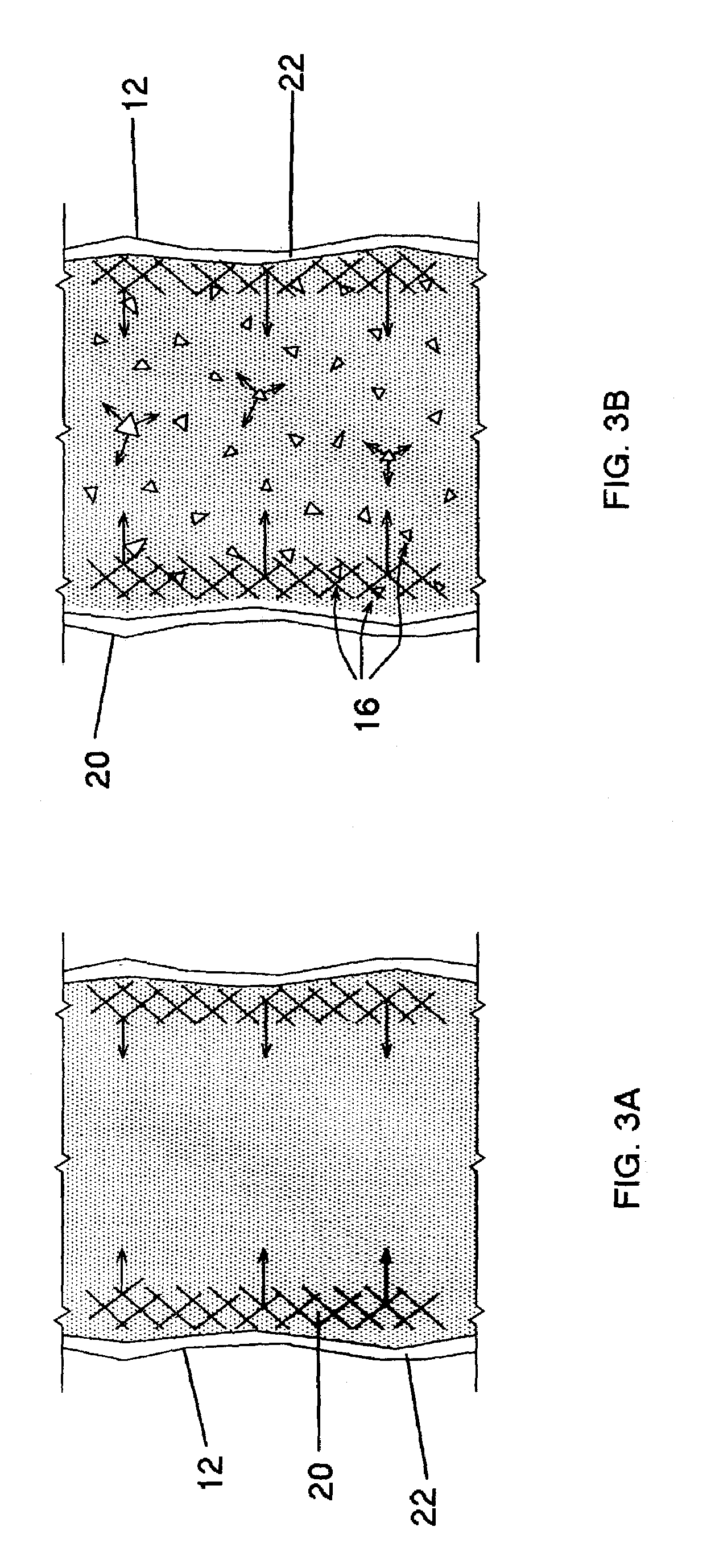Method of increasing latent heat storage of wood products
a technology of latent heat storage and wood products, applied in the field of natural and man-made wood products, can solve the problem of not possessing the apparent thermal advantage of heart pin
- Summary
- Abstract
- Description
- Claims
- Application Information
AI Technical Summary
Benefits of technology
Problems solved by technology
Method used
Image
Examples
Embodiment Construction
[0016]The present invention provides thermally enhanced wood products treated or altered to improve heat storage capacity and / or change the heat retention and release properties. Referring to FIG. 2A, natural unprocessed wood 10 is characterized by resin canals 12 that are in whole or in part filed with resin 14. As described below and as shown in FIG. 2B, nucleating agents 16 are inserted into the resin canals 12 and cause a phase change in response to temperature fluctuations resulting in improved latent heat properties and increase the release or absorption of thermal energy. Such core structure is typical of resinous wood. As shown in FIG. 3A, the resin canals 12 normally undergo progressive crystallization in a peripheral zone 20 inwardly of the canal wall 22. As shown in FIG. 3B, the nucleating agents 16 are effective to propagate the crystallization both inwardly and outwardly to greatly increase the phase change material (PCM) volume thereby increasing the latent thermal pot...
PUM
 Login to View More
Login to View More Abstract
Description
Claims
Application Information
 Login to View More
Login to View More - R&D
- Intellectual Property
- Life Sciences
- Materials
- Tech Scout
- Unparalleled Data Quality
- Higher Quality Content
- 60% Fewer Hallucinations
Browse by: Latest US Patents, China's latest patents, Technical Efficacy Thesaurus, Application Domain, Technology Topic, Popular Technical Reports.
© 2025 PatSnap. All rights reserved.Legal|Privacy policy|Modern Slavery Act Transparency Statement|Sitemap|About US| Contact US: help@patsnap.com



